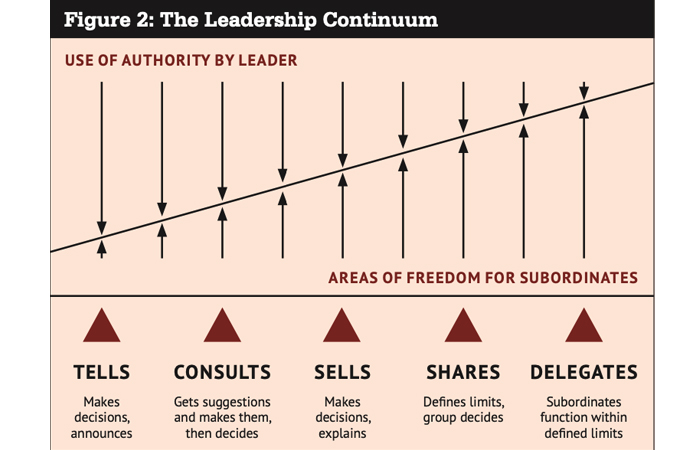The level of involvement depends on a number of factors. The Leadership Continuum (figure 2) describes the range of behaviours that we adopt through a process of change. At one end of the continuum, we are very directive. At the other end, we might set the ultimate goal and limitations, but allow the team to make the plan.
Three factors will affect the style of leadership and behaviour: the timescale for decision-making, leadership maturity and the level of risk. If we need to make changes quickly, the amount of team involvement tends to decline and we tend to take a directive approach as we see discussion as delaying the process which, if it is time-critical, may not be appropriate. If you have an extended period of time for a change, involving your team will allow people to engage more completely.
The maturity of our own leadership will affect how we want to involve others. If you are new in a role, you are less likely to have the confidence to involve others.
As our experience grows, we have more confidence to listen to and accept challenges from others. However, leadership maturity applies to the team as much as it does to the leader. A new team with little experience and a low level of maturity as a team could be overwhelmed, while a group with more experience will have more to offer.

